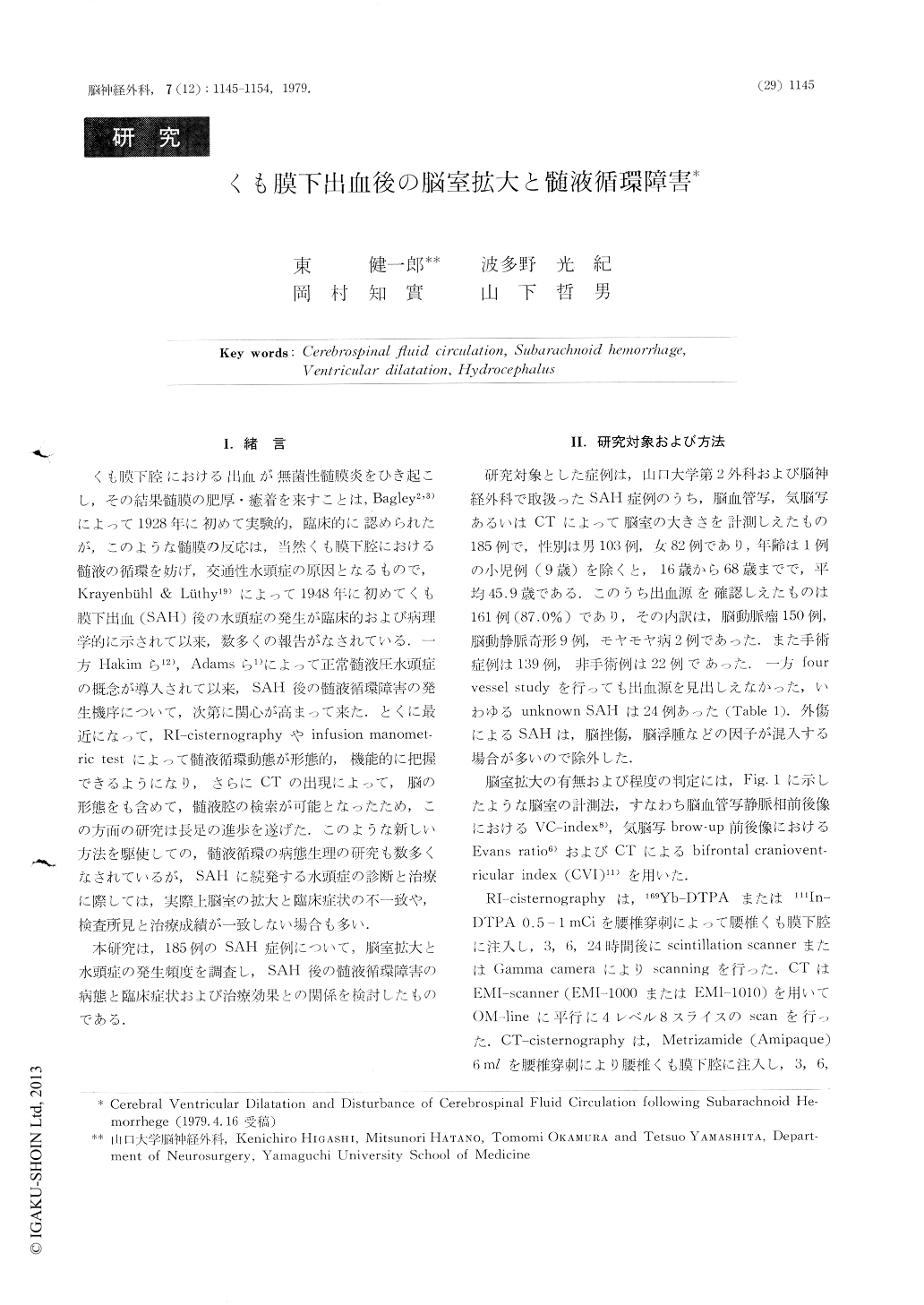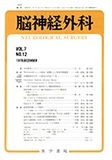Japanese
English
- 有料閲覧
- Abstract 文献概要
- 1ページ目 Look Inside
Ⅰ.緒言
くも膜下腔における出血が無菌性髄膜炎をひき起こし,その結果髄膜の肥厚・癒着を来すことは,Bagley2,3)によって1928年に初めて実験的,臨床的に認められたが,このような髄膜の反応は,当然くも膜下腔における髄液の循環を妨げ,交通性水頭症の原因となるもので,Krayenbuhl & Luthy19)によって1948年に初めてくも膜下出血(SAH)後の水頭症の発生が臨床的および病理学的に示されて以来,数多くの報告がなされている.一方Hakimら12),Adamsら1)によって正常髄液圧水頭症の概念が導入されて以来,SAH後の髄液循環障害の発生機序について,次第に関心が高まって来た.とくに最近になって,RI-cisternographyやinfusion manometric testによって髄液循環動態が形態的,機能的に把握できるようになり,さらにCTの開現によって,脳の形態をも含めて,髄液腔の検索が可能となったため,この方面の研究は長足の進歩を遂げた.このような新しい方法を駆使しての,髄液循環の病態生理の研究も数多くなされているが,SAHに続発する水頭症の診断と治療に際しては,実際上脳室の拡大と臨床症状の不一致や,検査所見と治療成績が一致しない場合も多い.
The incidence of cerebral ventricular dilatation and disturbance in the cerebrospinal fluid (CSF) circulation was investigated in 185 successive patients with subarachnoid hemorrhages (SAH) in reference to clinical manifestations and effects of the treatment of post-SAH hydrocephalus.
The dilatation of cerebral ventricles was estimated by cerebral angiography, pneumoencephalography, and the CT-scan before and after surgery. The dynamics of CSF circulation was estimated by RI-cisternography, Metrizamide CT-cisternography, and the infusion manometric test.

Copyright © 1979, Igaku-Shoin Ltd. All rights reserved.


